Birding the Bay Islands: The crazy chaos of nesting season on Alcatraz
By Helen Doyle (All Photos and Story)
Alcatraz Island is quieting down as another nesting season wraps up. The Peregrine falcon and Western gull chicks have fledged, the Brandt’s Cormorant chicks are as big as their parents, the Snowy Egrets and Pigeon Guillemots are mostly gone. Another generation flies the coop. Just what makes this rocky island such a fabulous nesting location?
My interest in Alcatraz’s unique seasonal bird population was piqued when I had the opportunity to visit frequently as a volunteer with the Alcatraz Historic Gardens program. More of a plant person than a birder, I’m intrigued by different habitats and the wildlife they support (hence, my interest in writing the Birding the Bay Islands series: Bair, Angel, and Mare).
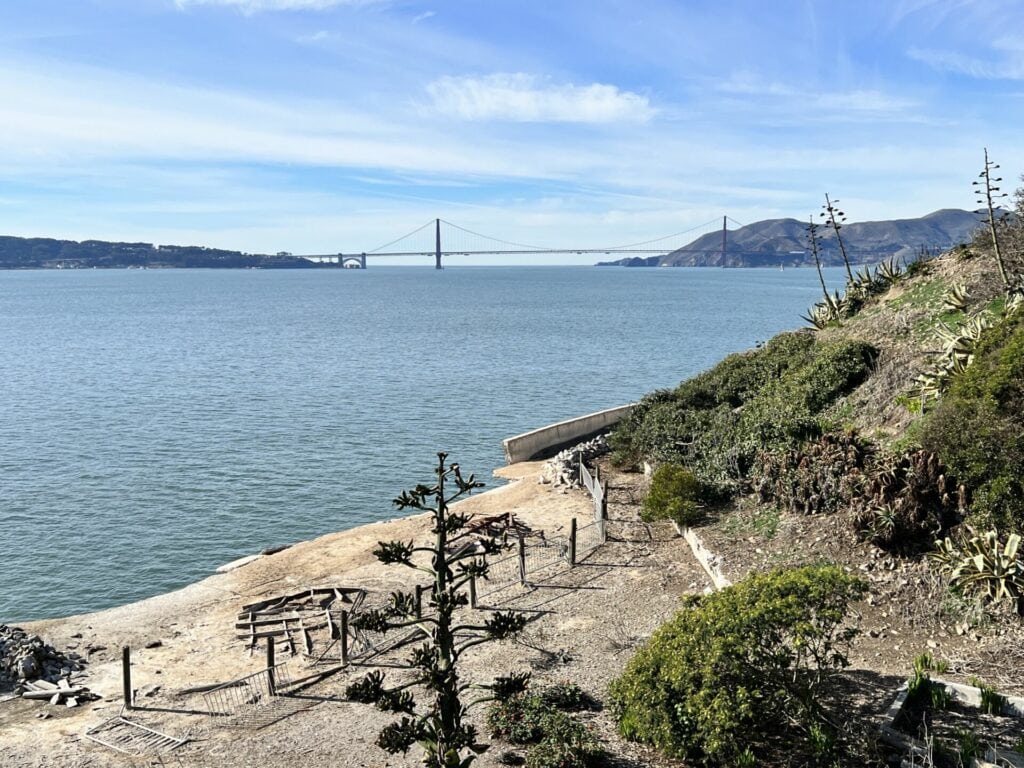 Few birds were visible on the Parade Ground on this calm December day, with the Golden Gate Bridge in the background.
Few birds were visible on the Parade Ground on this calm December day, with the Golden Gate Bridge in the background.
Less than two miles from San Francisco, Alcatraz Island offers 22-acres of critical nesting habitat for many shore and water birds. It’s noisy and smelly and fascinating.
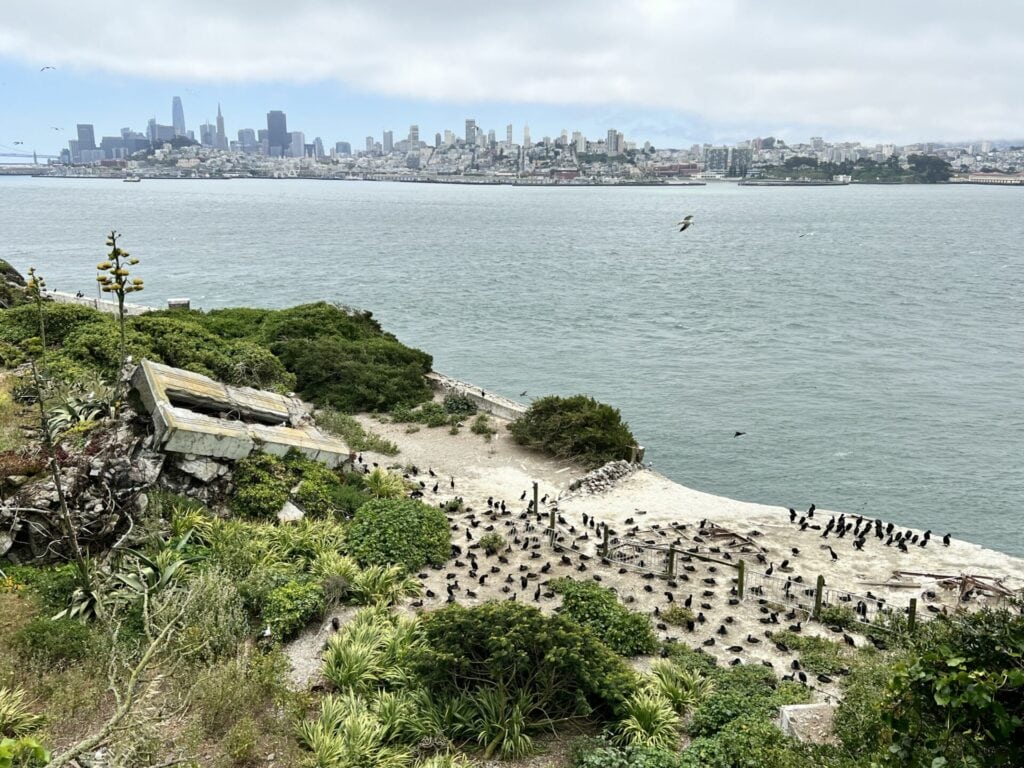 By May, Brandt’s cormorants have staked out their nesting spots on the Parade Ground.
By May, Brandt’s cormorants have staked out their nesting spots on the Parade Ground.
The human history of Alcatraz is a multi-layered, mostly painful story. While there’s no evidence that the Ramaytush Ohlone and other indigenous people of the Bay Area had settlements on the island, they may have visited the island to harvest eggs and birds for food, to conduct ceremonies, and to isolate/ostracize members of their tribes who violated tribal law. It should also be noted that indigenous people used the island as a refuge from the oppresive California Mission system, and once the island became a prison, many Native Americans were incarcerated for resisting the allotment of tribal lands and refusing to send their children to boarding schools. We don’t know what the local indigenous people called the island prior to colonization by the Spanish. Juan Manuel de Ayala named it Isla de los Alcatraces (“Isle of the Pelicans”) in 1775, recognizing its abundant bird population. Alcatraz had the first lighthouse on the Pacific coast (built in 1854), was an important military base during the Civil War, became a military prison, and finally was a brutal federal prison from 1933 to 1963. From 1969 to 1971, local Native Americans and members of the American Indian Movement took over the island as part of the nationwide activism around indigenous rights and sovereignty (see We Hold the Rock for more about indigenous history and occupation).…

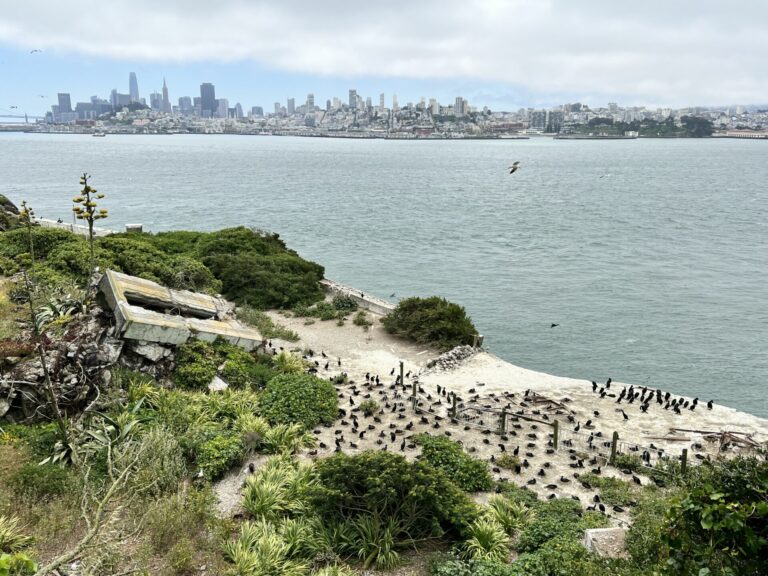
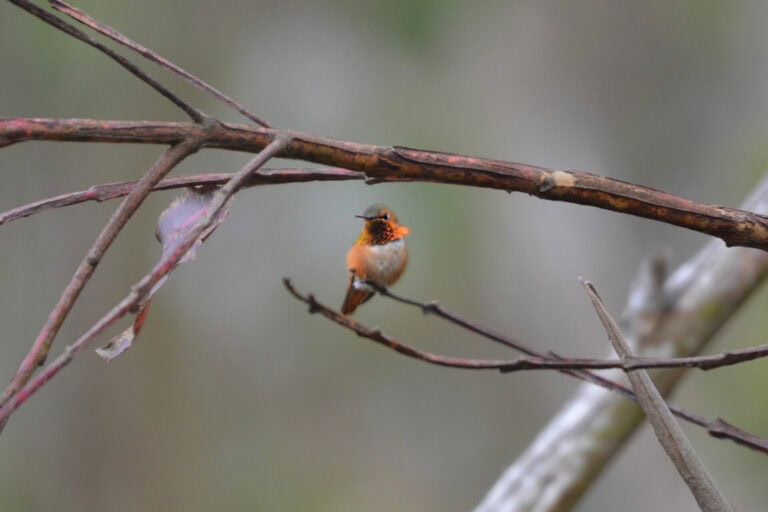
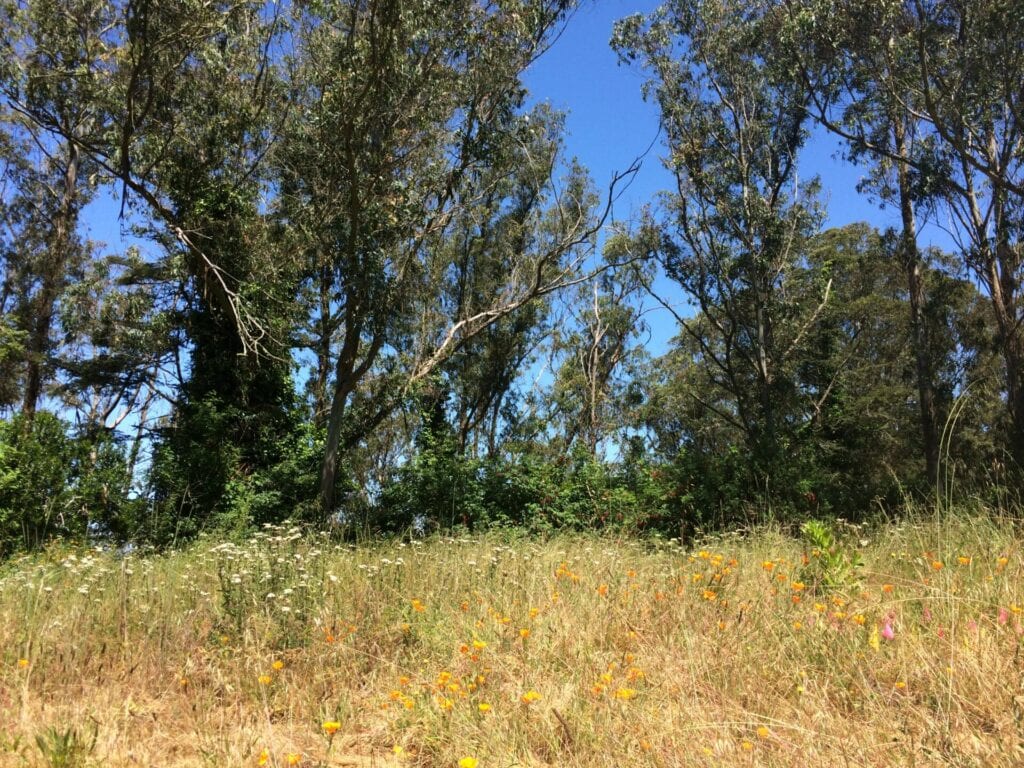
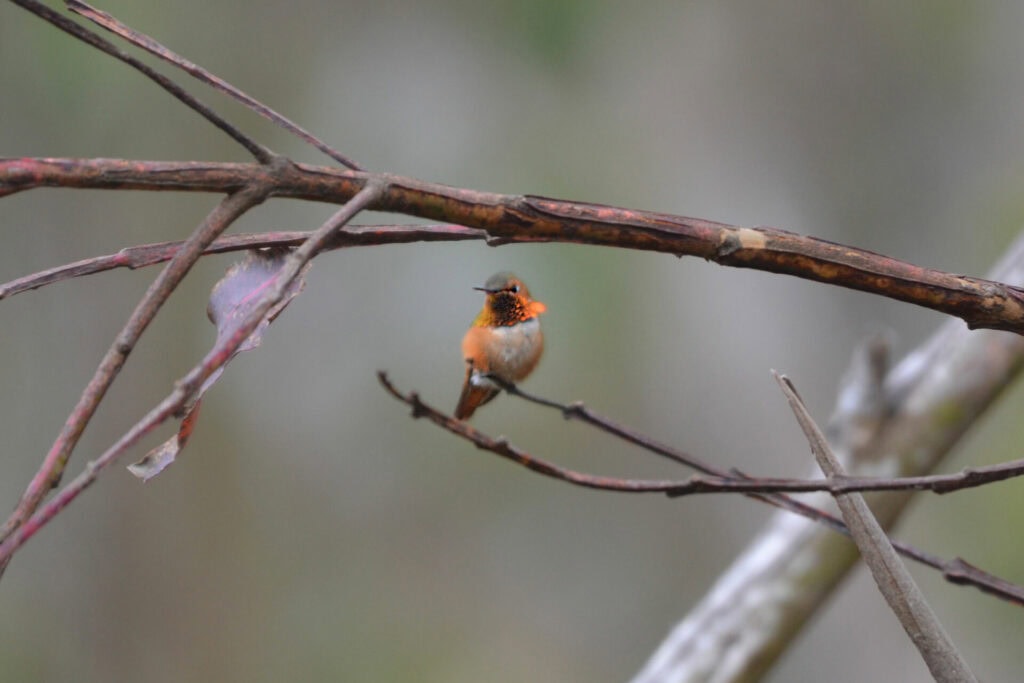 Allen’s Hummingbird at Mount Sutro by Catie Michel
Allen’s Hummingbird at Mount Sutro by Catie Michel
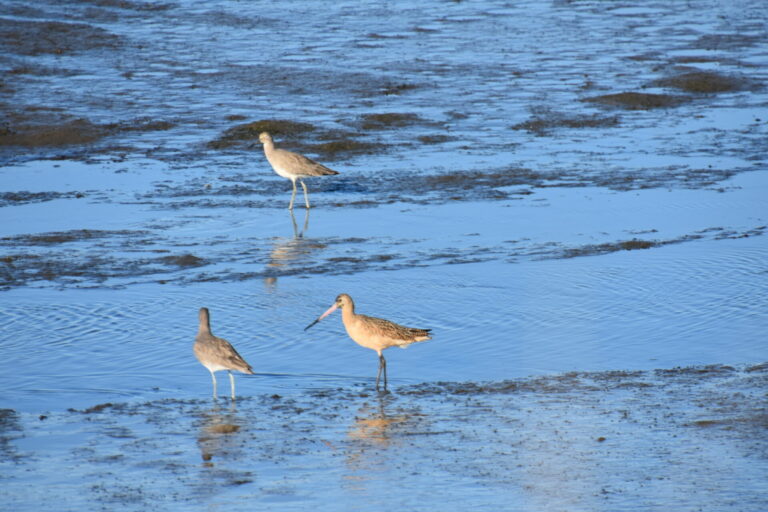
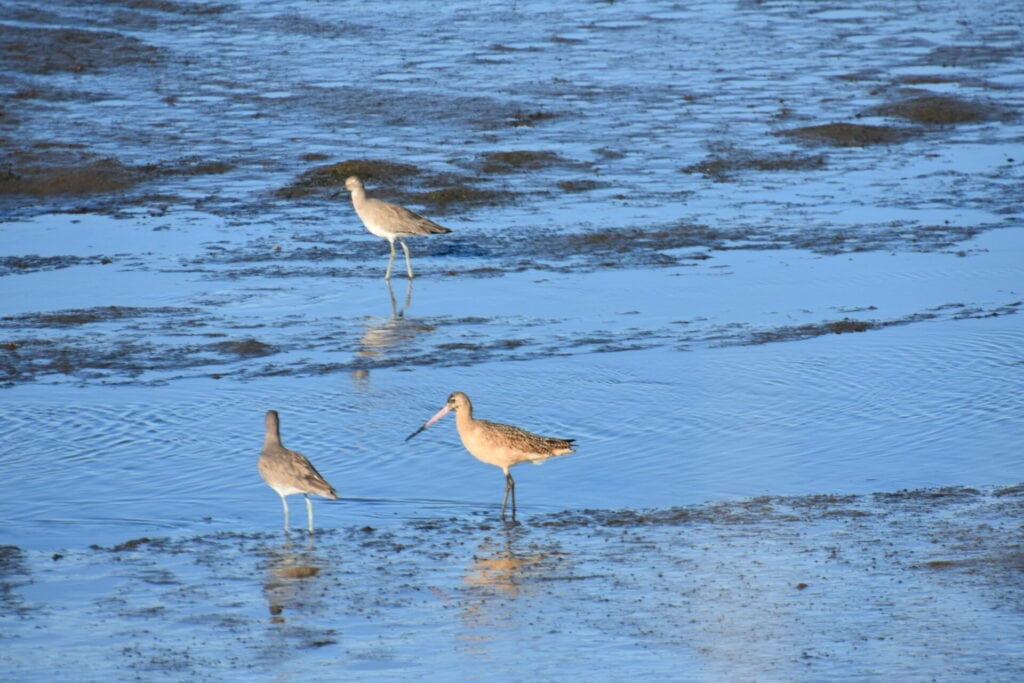 Marbled Godwits search for food in mud exposed by the ebbing tide by Helen Doyle
Marbled Godwits search for food in mud exposed by the ebbing tide by Helen Doyle
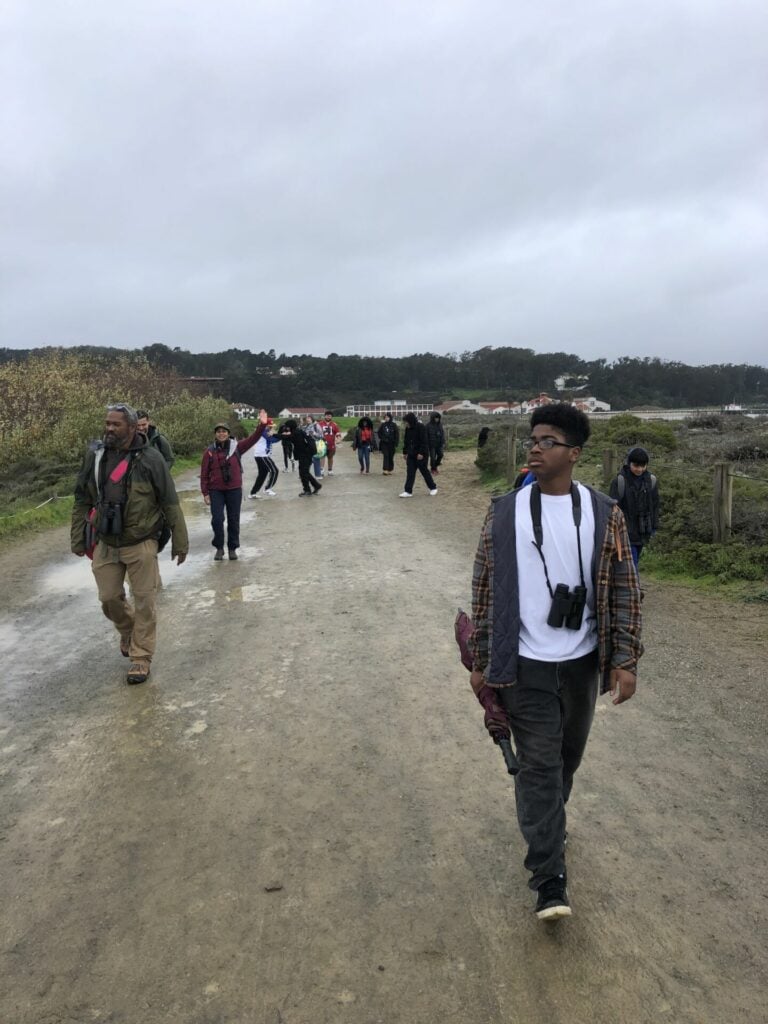
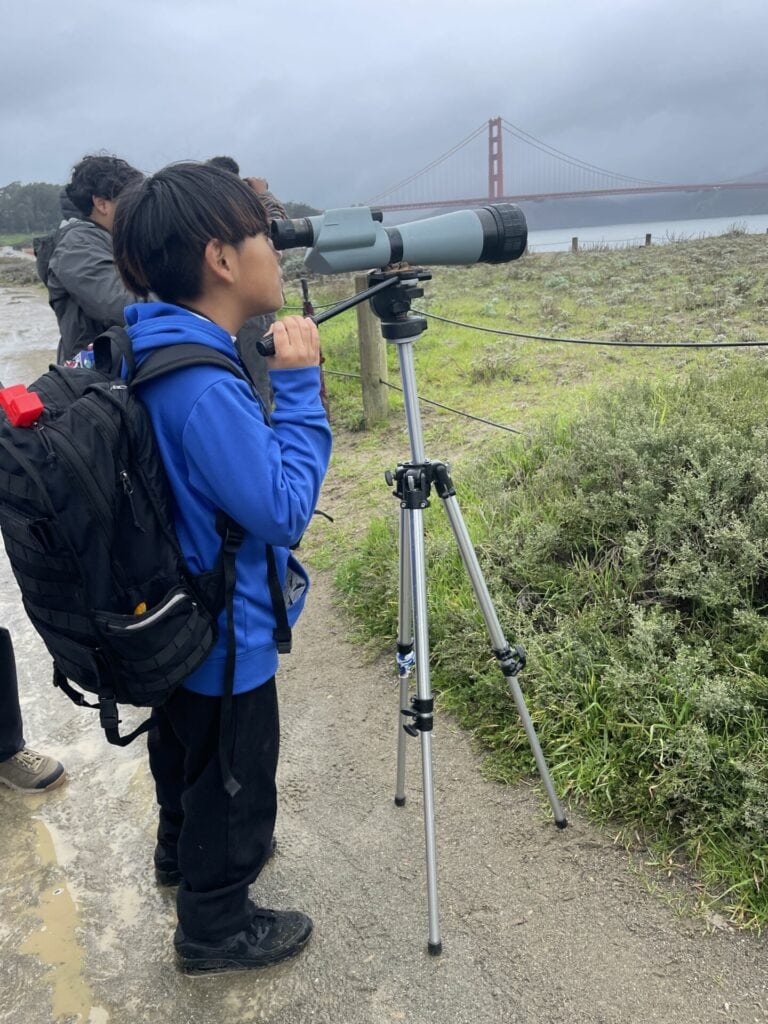 Getting the hang of the scope. Photo by Natalie Gustin Toland
Getting the hang of the scope. Photo by Natalie Gustin Toland
 The Heron’s Head Crew. Photo by Dan Scali
The Heron’s Head Crew. Photo by Dan Scali